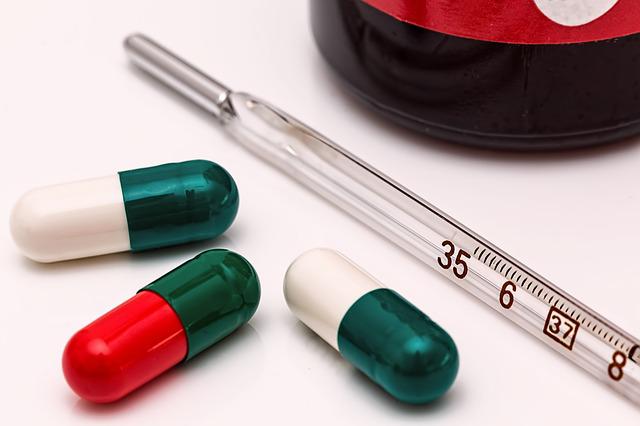How long to wait to take temperature after waking up? In theory, if you use an ear thermometer immediately after waking up, the body temperature on your sleeping side might be slightly higher. If so, check again about an hour after you wake up.
There is a lot of misunderstanding about what a fever is and what a normal body temperature is. “The average body temperature for children is 98.6 degrees Fahrenheit, though this can vary by one degree depending on the child. Early afternoon and early evening always see the highest body temperatures, while early morning sees the lowest temperatures. The threshold for a fever, according to medical professionals, is 100.4 degrees.
Rectal thermometry is the gold standard for taking someone’s temperature, especially for infants younger than one year old. Although many parents are anxious or uneasy about doing this, when done properly, your child will not suffer. Do not assume that by touching the forehead, you can determine your child’s temperature.
Table of Contents
How To Take Temperature After Waking Up?
Oral Temperature After Waking Up
An oral thermometer, which is put in the mouth, is required.
- Before taking your temperature by mouth after eating or drinking, wait 30 minutes.
- Activate the digital thermometer. Under your tongue, place the thermometer tip.
- For the recommended period of time—or until the thermometer beeps to signal completion—close your mouth around the device.
- Take the thermometer off, then check the reading.
Ear Temperature After Waking Up
The temperature of the ear canal is measured by a digital ear thermometer using an infrared ray.
- A digital thermometer should be turned on. The instructions that came with the device say to only insert it as far into your ear canal as necessary.
- When the thermometer beeps to let you know it’s finished, hold the thermometer firmly in place.
- Take the thermometer out, then check the reading.

Temporal Artery Temperature After Waking Up
A temporal artery thermometer measures the temperature of the artery in your forehead using an infrared scanner.
- Activate the digital thermometer.
- Then, carefully read the number as you pass it over your forehead.
Armpit Temperature After Waking Up
If necessary, you can take your temperature in your armpit using a digital thermometer. Oral temperatures are usually more accurate than armpit temperatures.
- Activate the digital thermometer. Make sure the thermometer is in your armpit and that it only touches your skin, not any clothing.
- Hold the thermometer firmly in place until you hear it beep to let you know it’s finished.
- To read the number, remove the thermometer.
Fever And Covid-19
A fever aids in the fight against infection and is usually nothing to worry about. When your temperature exceeds 103 degrees or if you’ve had a fever for longer than three days, it is generally advised that you call a doctor. Precautions are different during the outbreak, though, as it is critical to quarantine at the first indications of COVID-19.
“Typically, we don’t classify a temperature as a fever until it rises above 100.4 degrees, according to Orlandi. “With COVID-19, however, a temperature of more than 100.0 degrees is regarded as a symptom, so it is best to err on the side of caution.” You are eligible for COVID-19 testing if your temperature is greater than 100.0.
Read about: How Long Does A Dream Last?
Your Temperature Changes Throughout The Day
Make sure to check your temperature at about the same time every day if you are keeping track of it. Your temperature changes hour by hour, so it’s critical to maintain consistency.
Body temperatures range from 97.7 to 99.5 degrees Fahrenheit, with 98.6 being the average. Changes in your environment, physical activity, and daily hormonal activity changes all contribute to fluctuations. For instance, you may have a lower temperature in the morning after sleeping in a cold room, and a higher temperature after exercising or doing housework
Why Our Health System Does Temperature Screenings?
Anyone entering one of our hospitals or clinics will have their temperature checked using infrared and temporal thermometers as part of U of U Health’s ongoing COVID-19 management efforts.
“It’s not a perfect predictor, but it’s another attempt to try to find people who might be at risk, says Orlandi. “When patients visit the hospital, we want to safeguard them and make them feel secure. Our health system is taking all possible precautions to keep our community safe, including separating ill patients from healthy ones, masking symptomatic patients, and requiring universal masking for all staff.”
Conclusion
How long to wait to take temperature after waking up? Few things are more threatening than a feverish child. Therefore, it should come as no surprise that fever is one of the most typical conditions for calling a doctor or going to the emergency room. Most parents still think that fevers are dangerous and could cause seizures, brain damage, or even death, despite the fact that there is a ton of research to the contrary. Fever is a helpful response the body produces to fight infection, not an illness or disease in and of itself.
A thermometer is the only tool that can be used to take a temperature accurately. Any pharmacy can provide a digital thermometer, which is affordable and simple to use. There are other places to check the temperature, such as under the tongue, under the arm, or in the ear, but these methods are less reliable and are dependent on how well your child cooperates and the quality of the instrument.
